Ganna Pogrebna
The Physics of Preference: Unravelling Imprecision of Human Preferences through Magnetisation Dynamics
Sep 30, 2023Abstract:Paradoxical decision-making behaviours such as preference reversal often arise from imprecise or noisy human preferences. By harnessing the physical principle of magnetisation reversal in ferromagnetic nanostructures driven by electric current, we developed a model that closely reflects human decision-making dynamics. Tested against a spectrum of psychological data, our model adeptly captures the complexities inherent in individual choices. This blend of physics and psychology paves the way for fresh perspectives on understanding human decision-making processes.
Linking Physics and Psychology of Bistable Perception Using an Eye Blink Inspired Quantum Harmonic Oscillator Model
Jun 23, 2023Abstract:This paper introduces a novel quantum-mechanical model that describes psychological phenomena using the analogy of a harmonic oscillator represented by an electron trapped in a potential well. Study~1 demonstrates the application of the proposed model to bistable perception of ambiguous figures (i.e., optical illusions), exemplified by the Necker cube. While prior research has theoretically linked quantum mechanics to psychological phenomena, in Study~2 we demonstrate a viable physiological connection between physics and bistable perception. To that end, the model draws parallels between quantum tunneling of an electron through a potential energy barrier and an eye blink, an action known to trigger perceptual reversals. Finally, we discuss the ability of the model to capture diverse optical illusions and other psychological phenomena, including cognitive dissonance.
Vision Transformers for Action Recognition: A Survey
Sep 13, 2022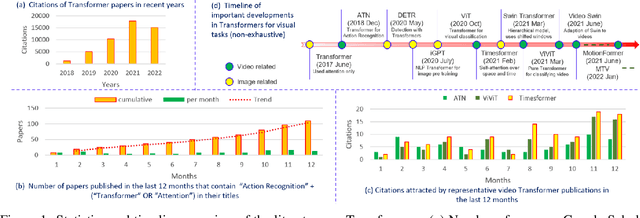
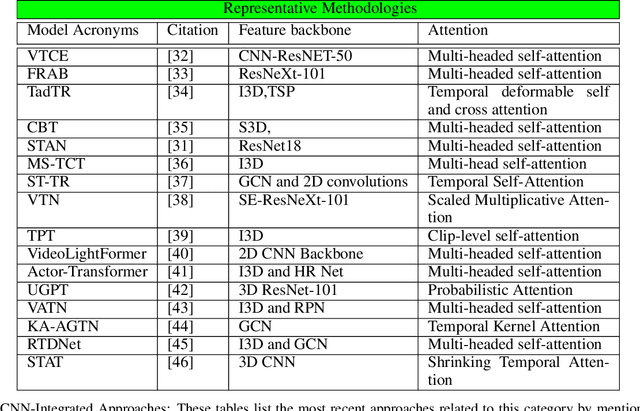
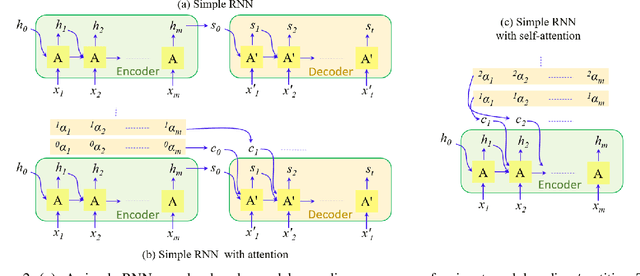
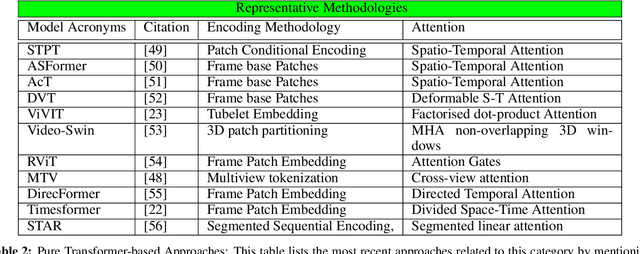
Abstract:Vision transformers are emerging as a powerful tool to solve computer vision problems. Recent techniques have also proven the efficacy of transformers beyond the image domain to solve numerous video-related tasks. Among those, human action recognition is receiving special attention from the research community due to its widespread applications. This article provides the first comprehensive survey of vision transformer techniques for action recognition. We analyze and summarize the existing and emerging literature in this direction while highlighting the popular trends in adapting transformers for action recognition. Due to their specialized application, we collectively refer to these methods as ``action transformers''. Our literature review provides suitable taxonomies for action transformers based on their architecture, modality, and intended objective. Within the context of action transformers, we explore the techniques to encode spatio-temporal data, dimensionality reduction, frame patch and spatio-temporal cube construction, and various representation methods. We also investigate the optimization of spatio-temporal attention in transformer layers to handle longer sequences, typically by reducing the number of tokens in a single attention operation. Moreover, we also investigate different network learning strategies, such as self-supervised and zero-shot learning, along with their associated losses for transformer-based action recognition. This survey also summarizes the progress towards gaining grounds on evaluation metric scores on important benchmarks with action transformers. Finally, it provides a discussion on the challenges, outlook, and future avenues for this research direction.
The Data Science of Hollywood: Using Emotional Arcs of Movies to Drive Business Model Innovation in Entertainment Industries
Jul 10, 2018
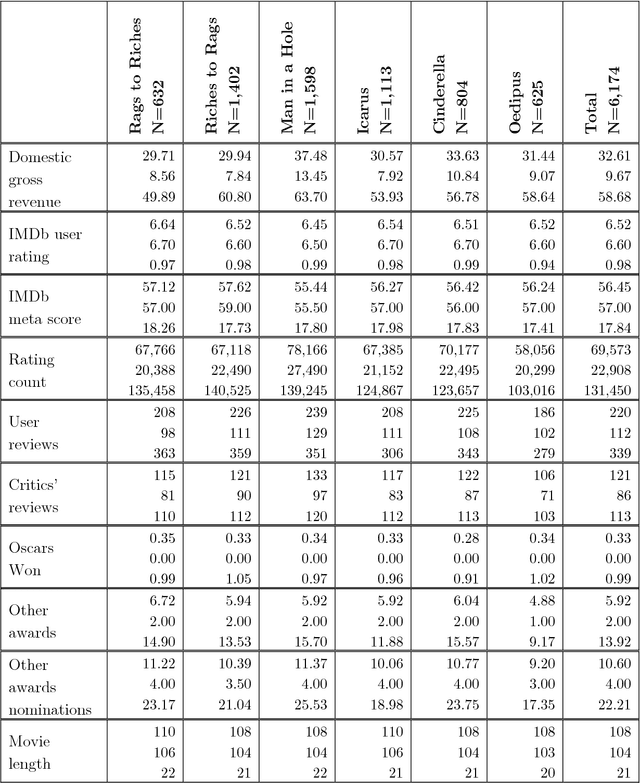

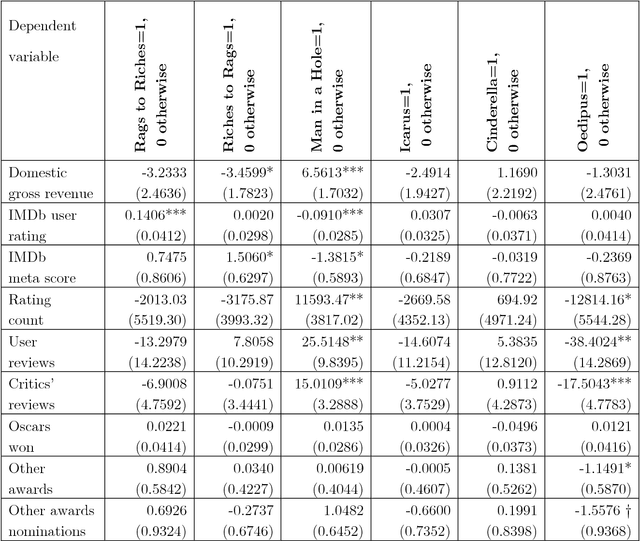
Abstract:Much of business literature addresses the issues of consumer-centric design: how can businesses design customized services and products which accurately reflect consumer preferences? This paper uses data science natural language processing methodology to explore whether and to what extent emotions shape consumer preferences for media and entertainment content. Using a unique filtered dataset of 6,174 movie scripts, we generate a mapping of screen content to capture the emotional trajectory of each motion picture. We then combine the obtained mappings into clusters which represent groupings of consumer emotional journeys. These clusters are used to predict overall success parameters of the movies including box office revenues, viewer satisfaction levels (captured by IMDb ratings), awards, as well as the number of viewers' and critics' reviews. We find that like books all movie stories are dominated by 6 basic shapes. The highest box offices are associated with the Man in a Hole shape which is characterized by an emotional fall followed by an emotional rise. This shape results in financially successful movies irrespective of genre and production budget. Yet, Man in a Hole succeeds not because it produces most "liked" movies but because it generates most "talked about" movies. Interestingly, a carefully chosen combination of production budget and genre may produce a financially successful movie with any emotional shape. Implications of this analysis for generating on-demand content and for driving business model innovation in entertainment industries are discussed.
 Add to Chrome
Add to Chrome Add to Firefox
Add to Firefox Add to Edge
Add to Edge